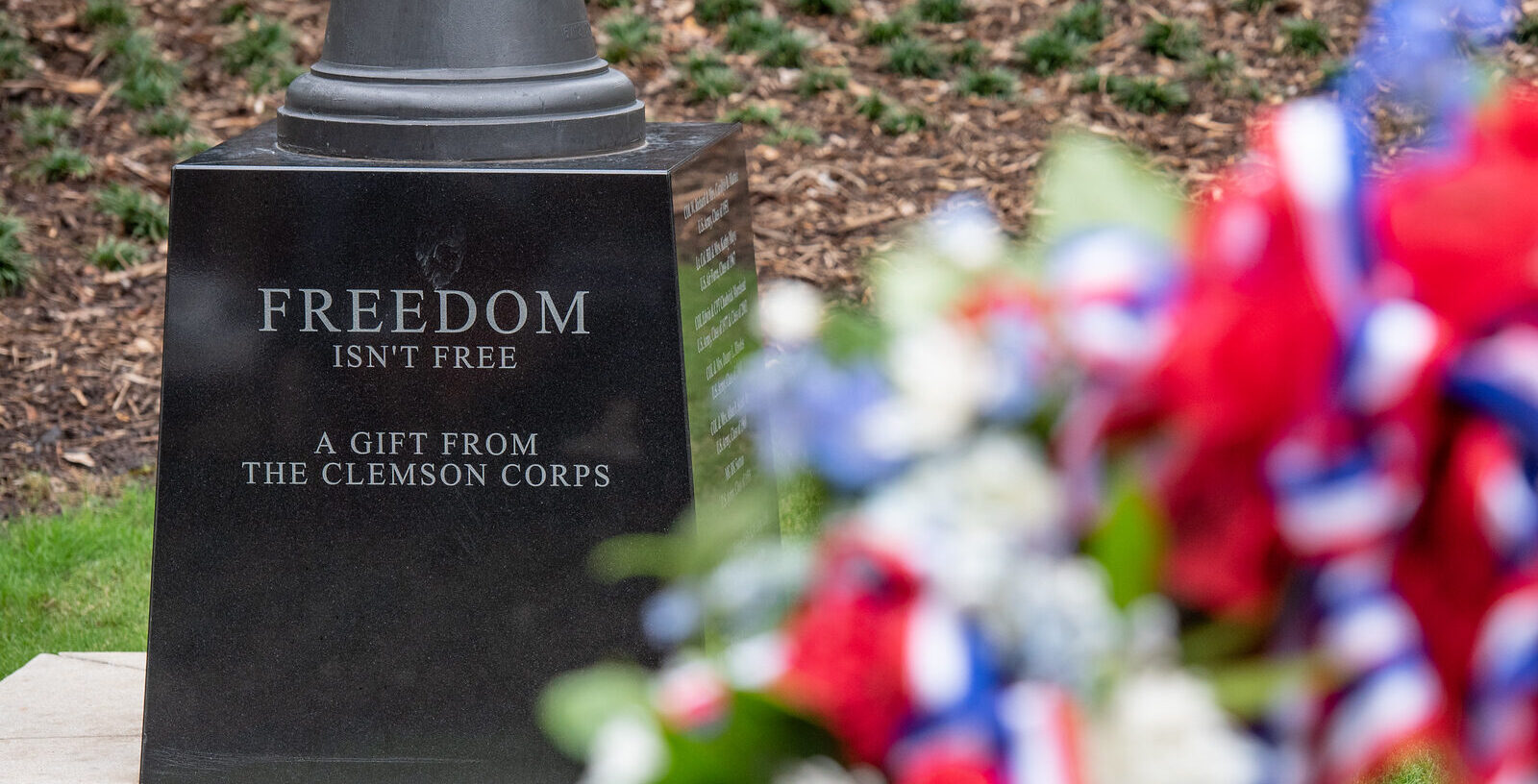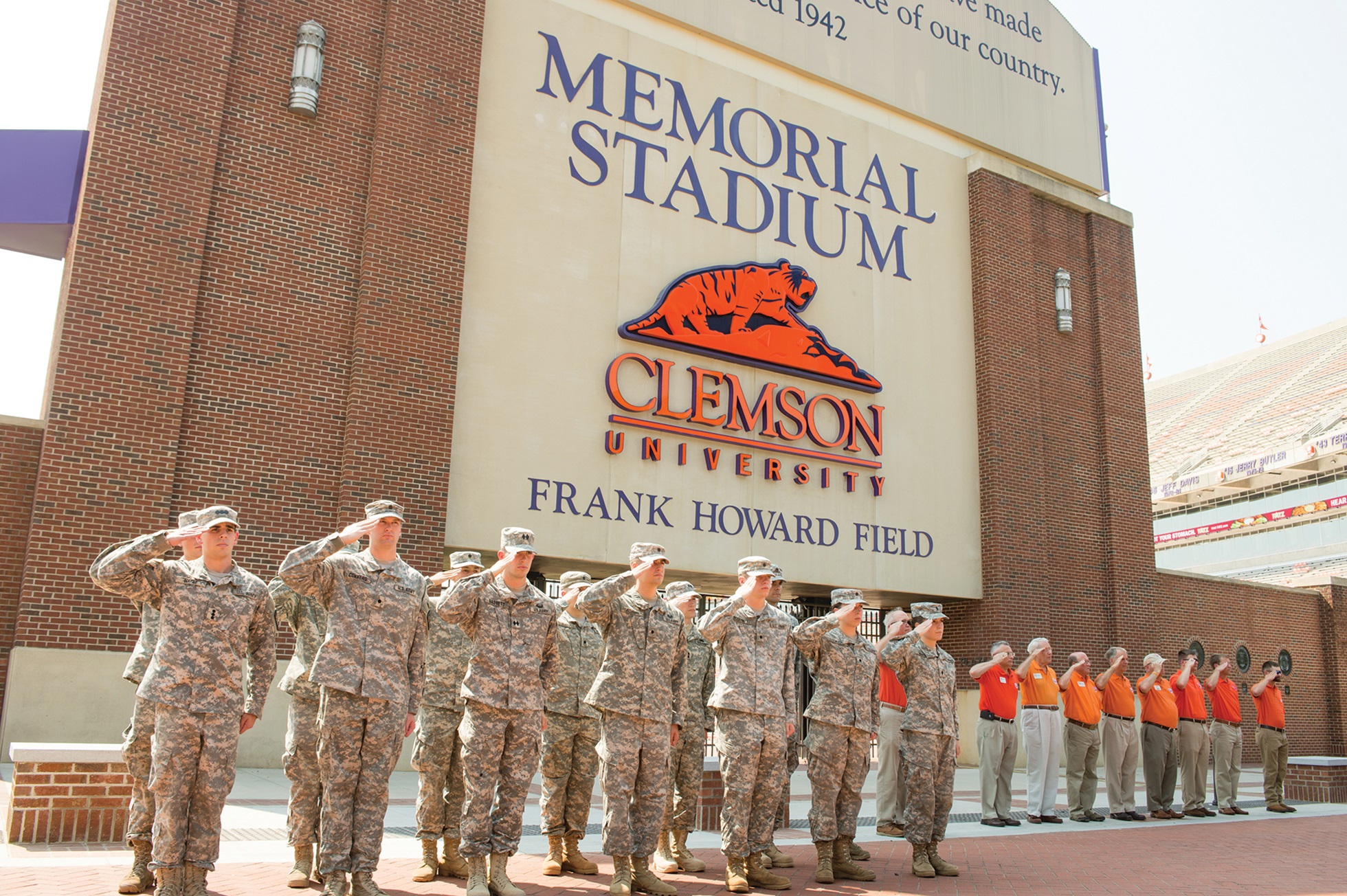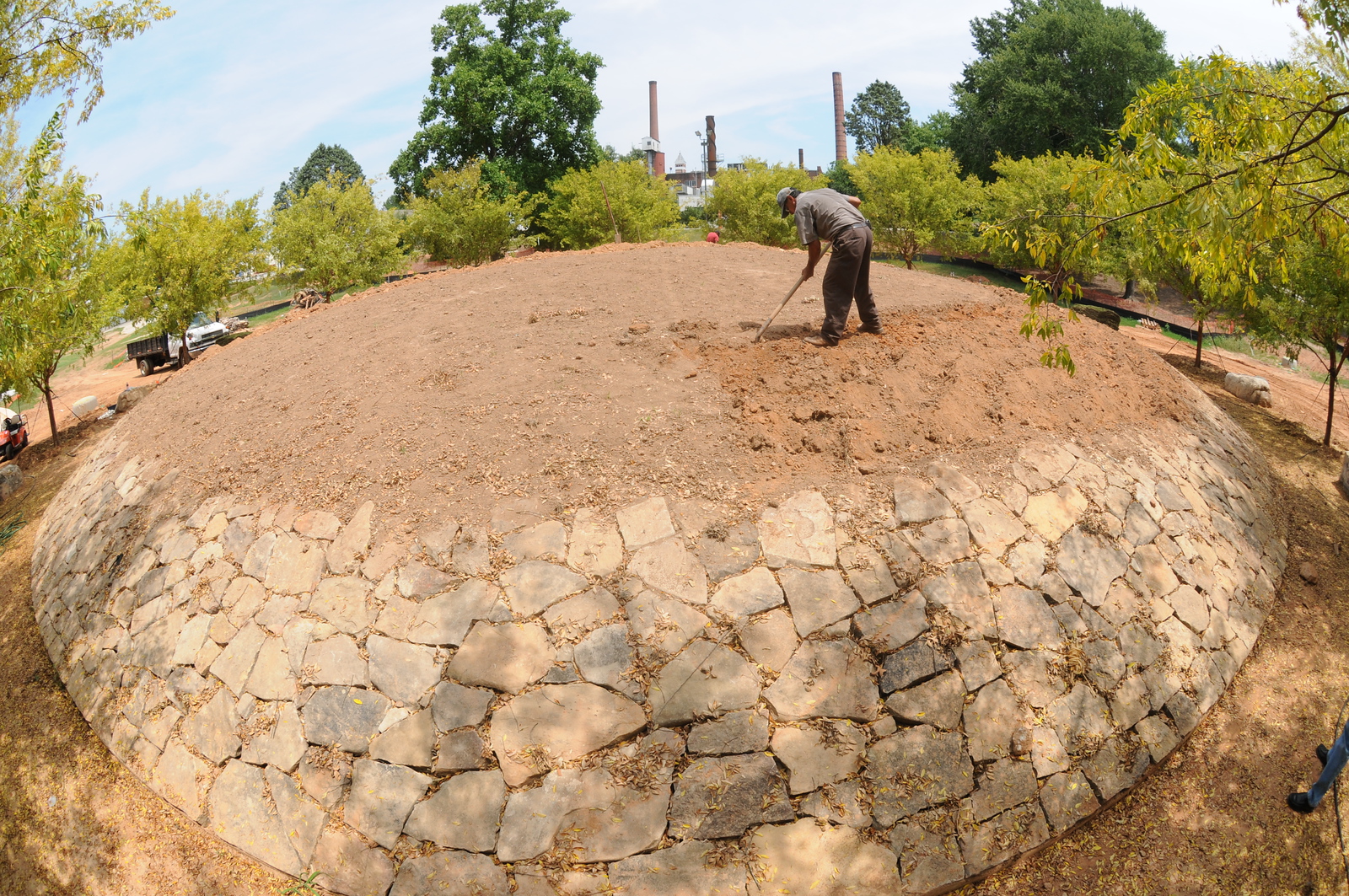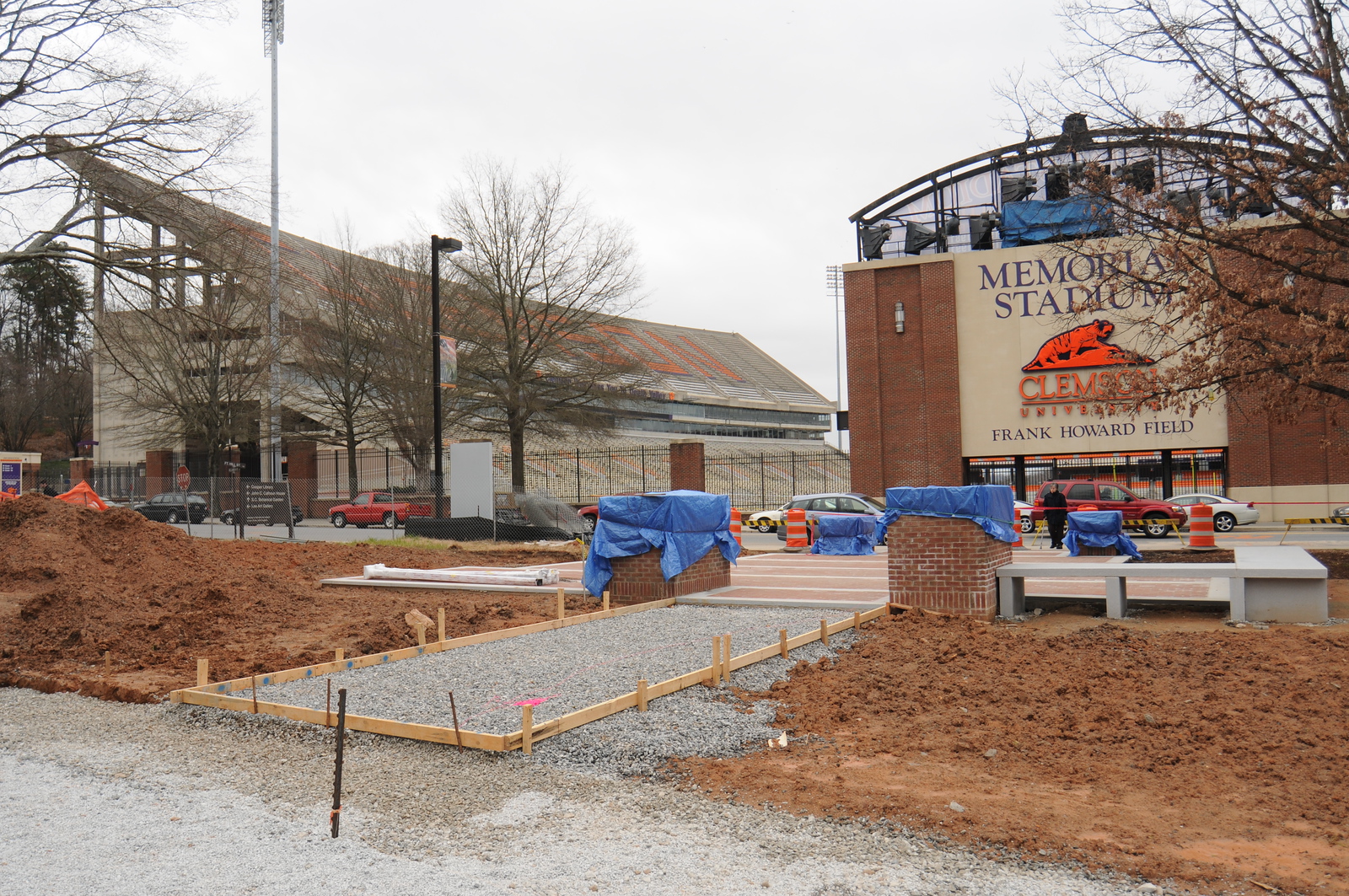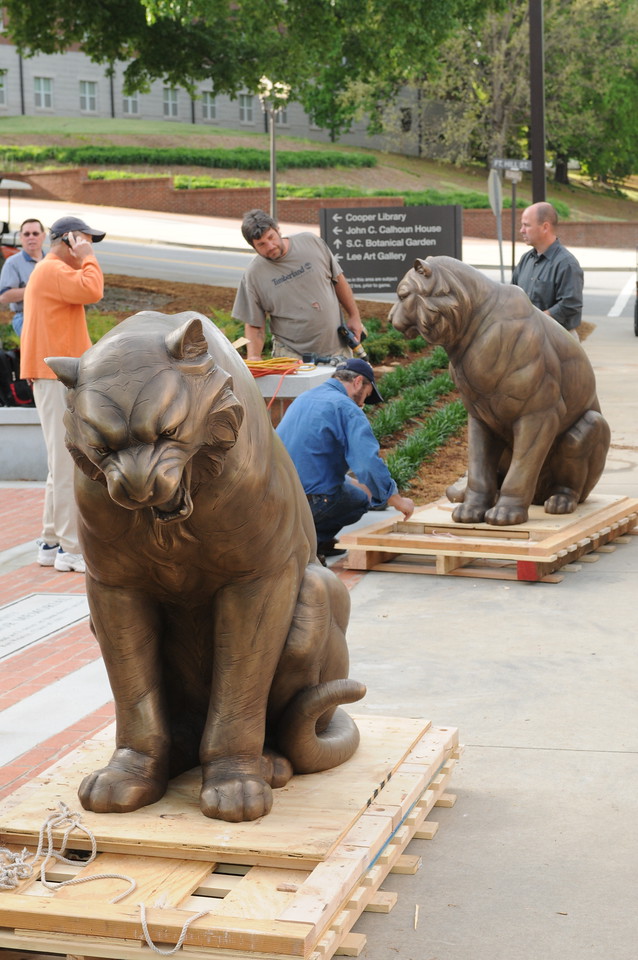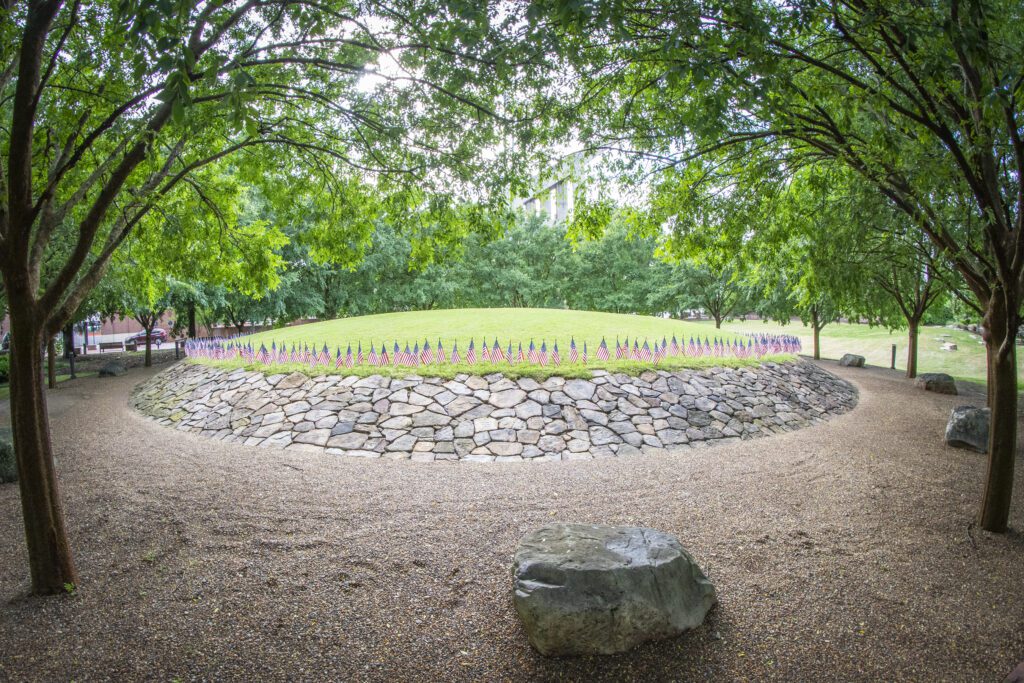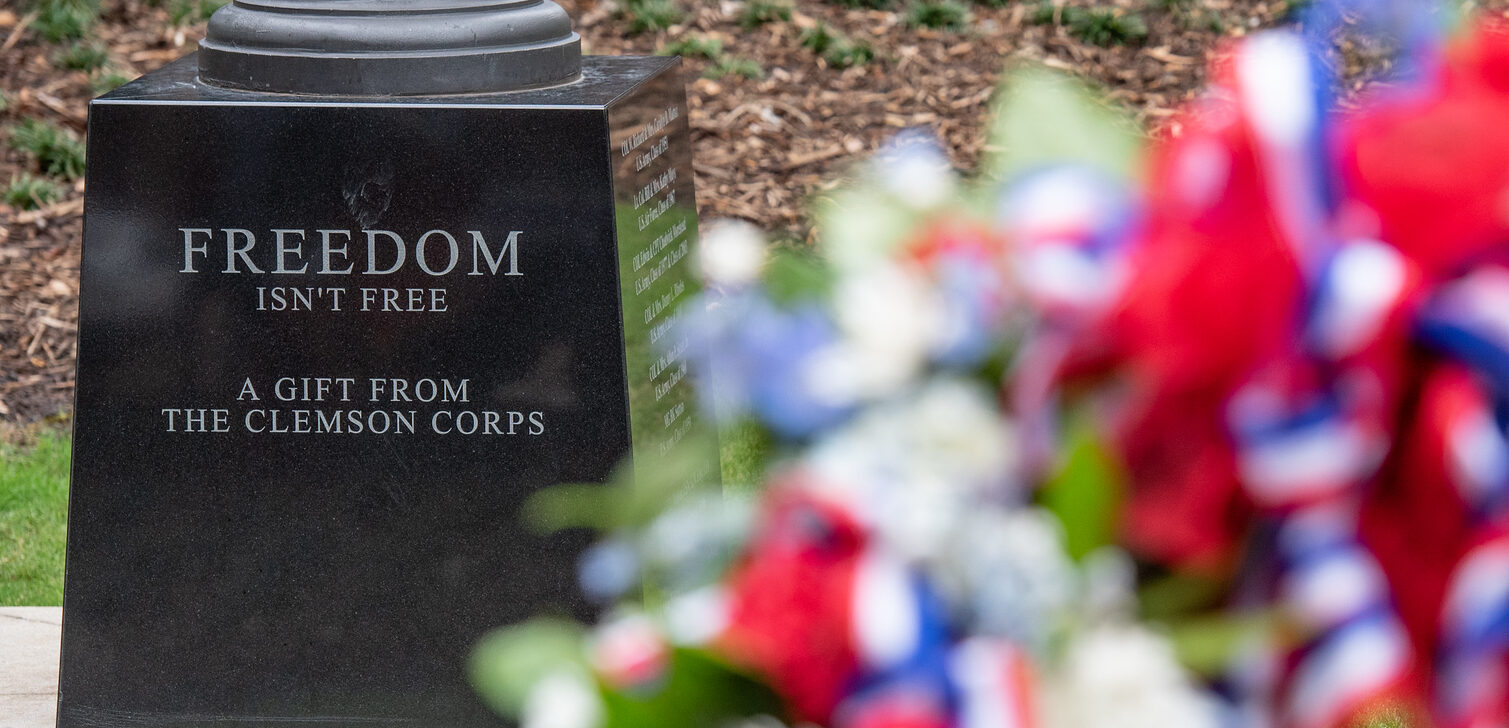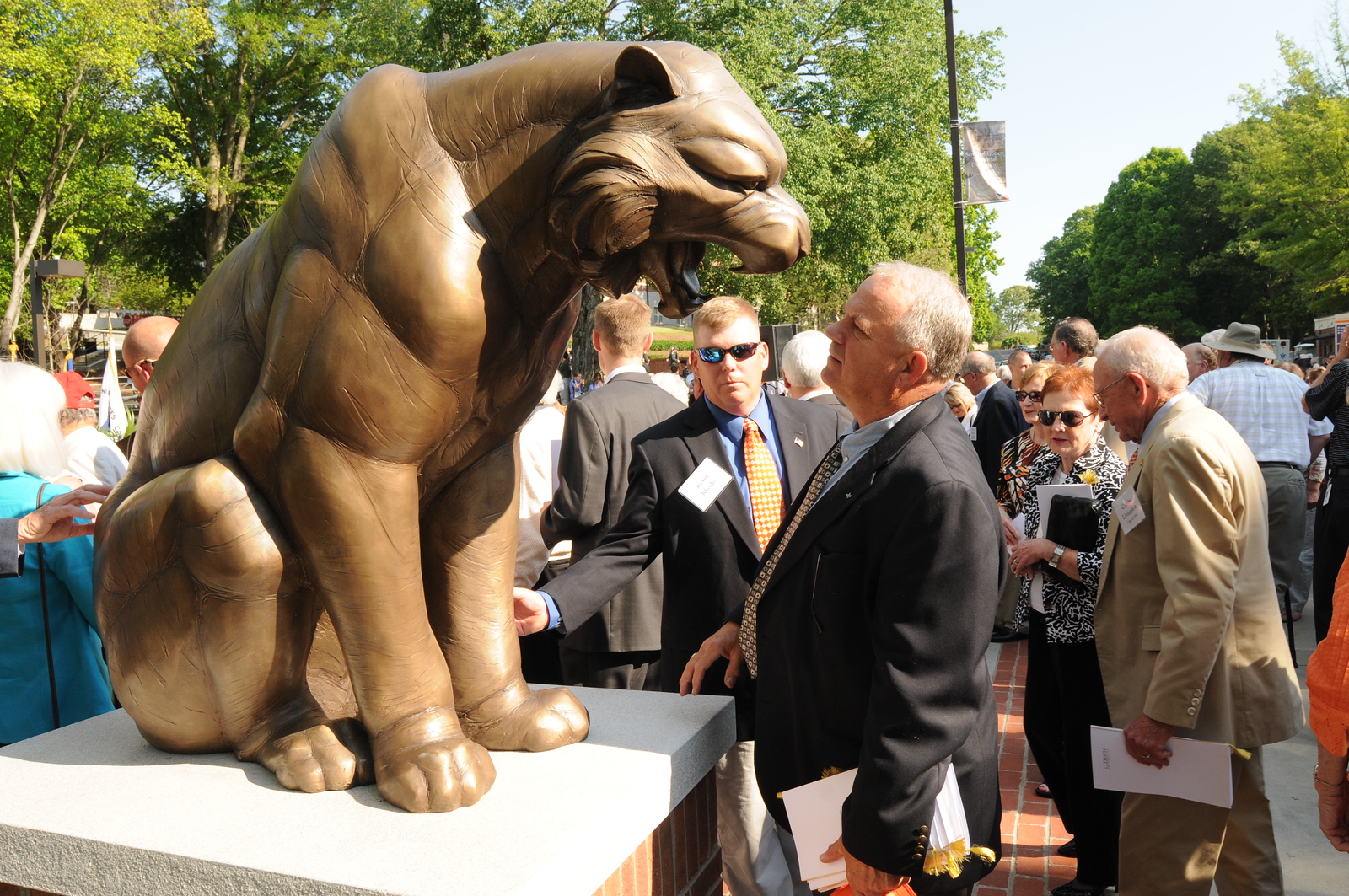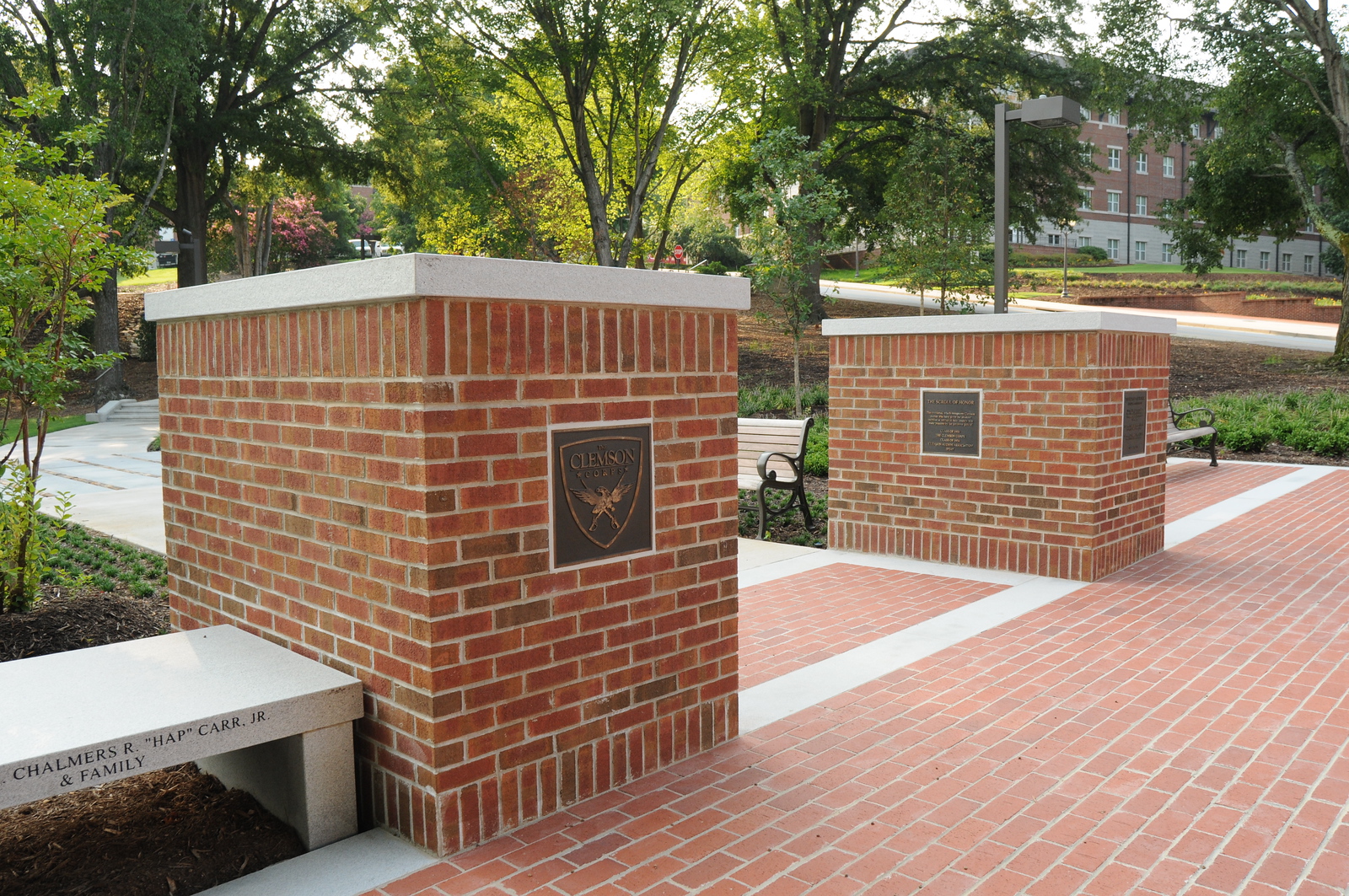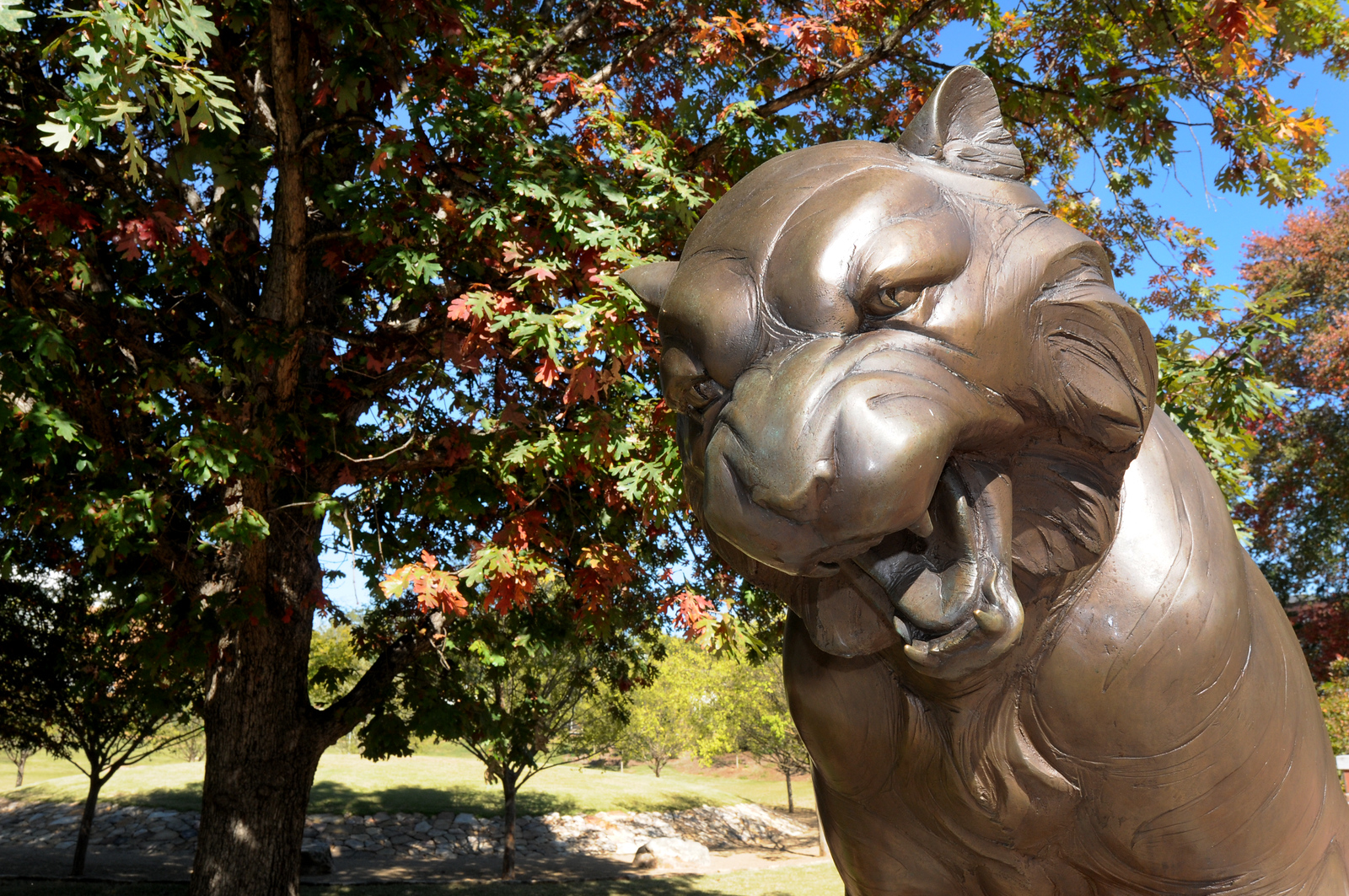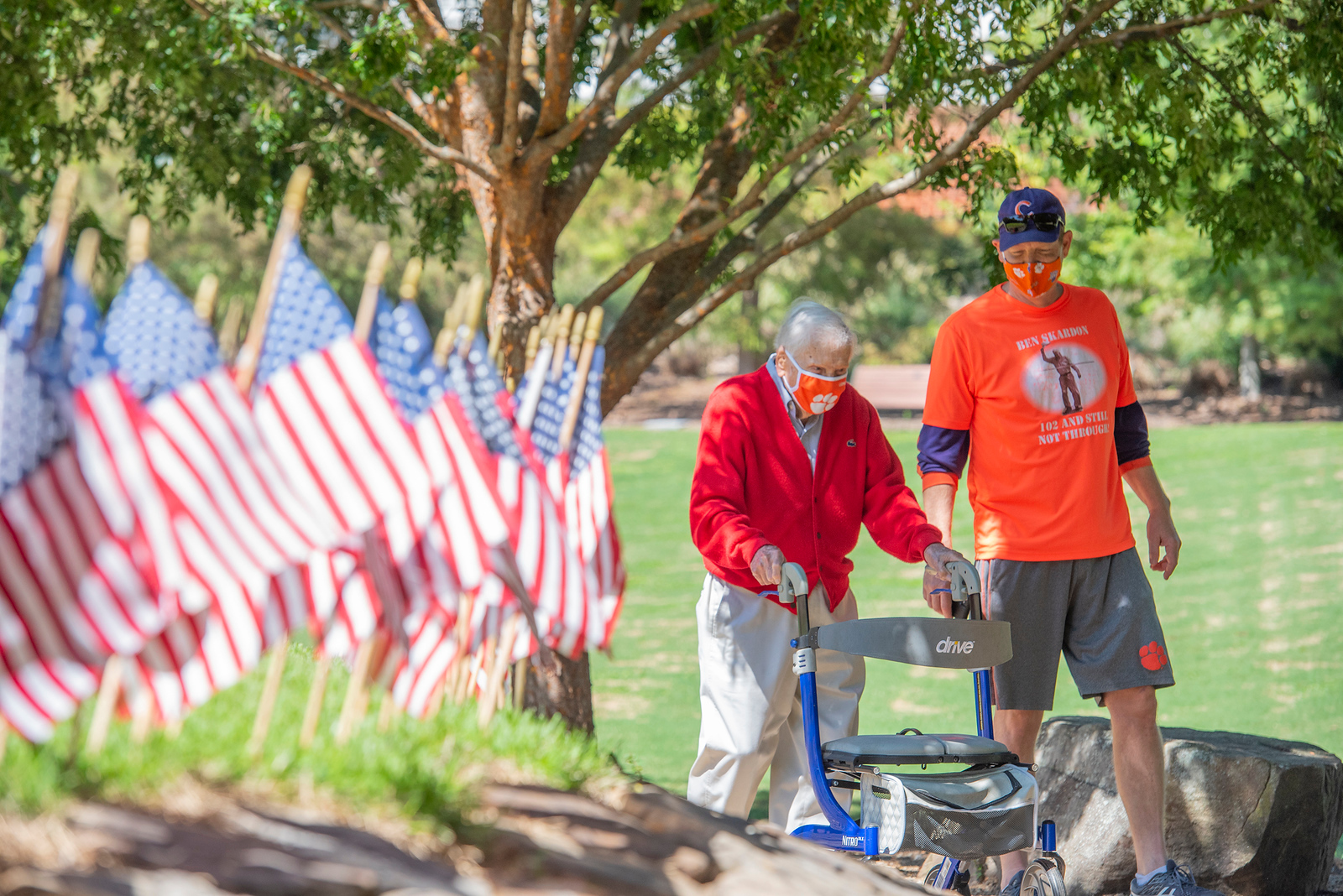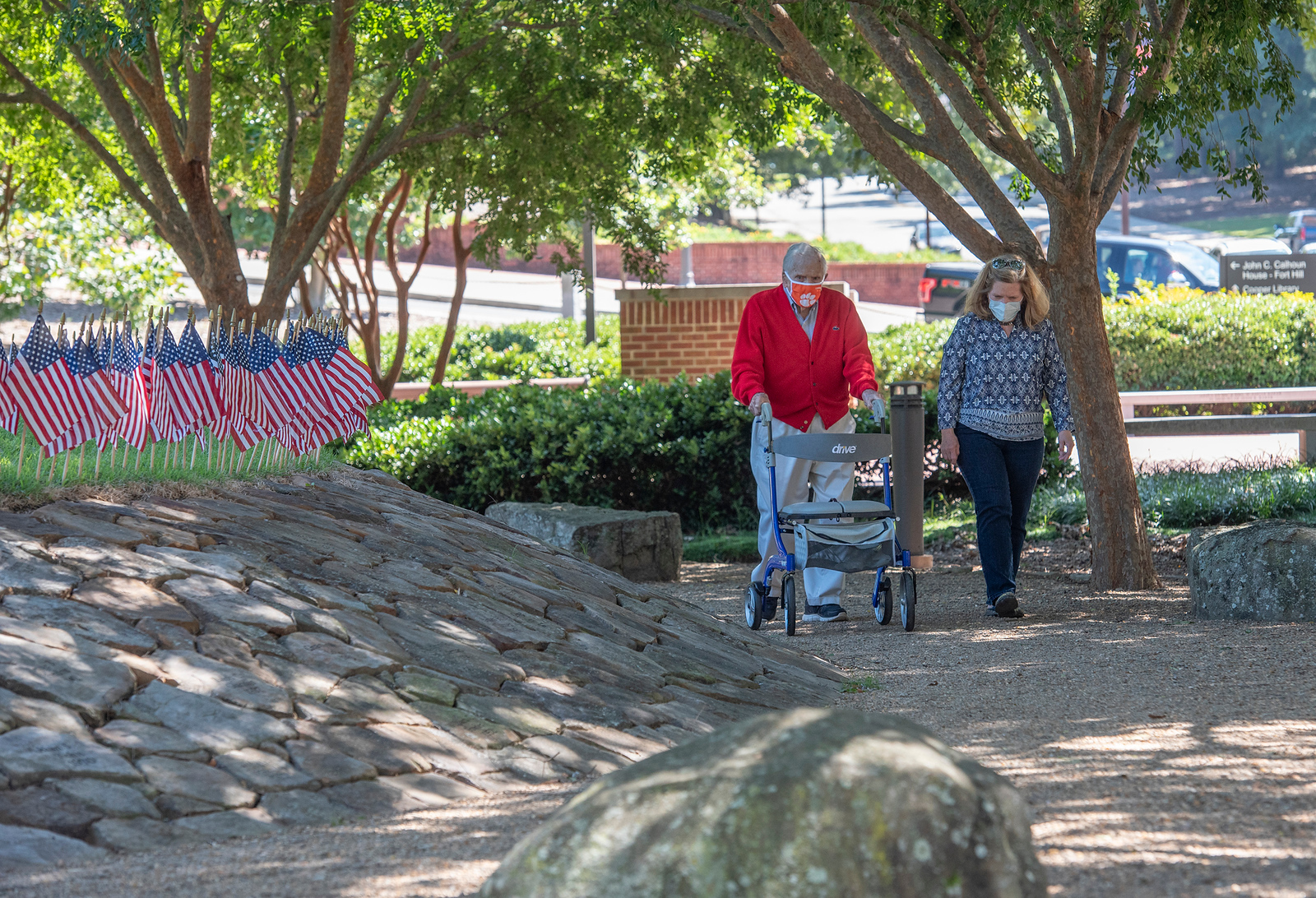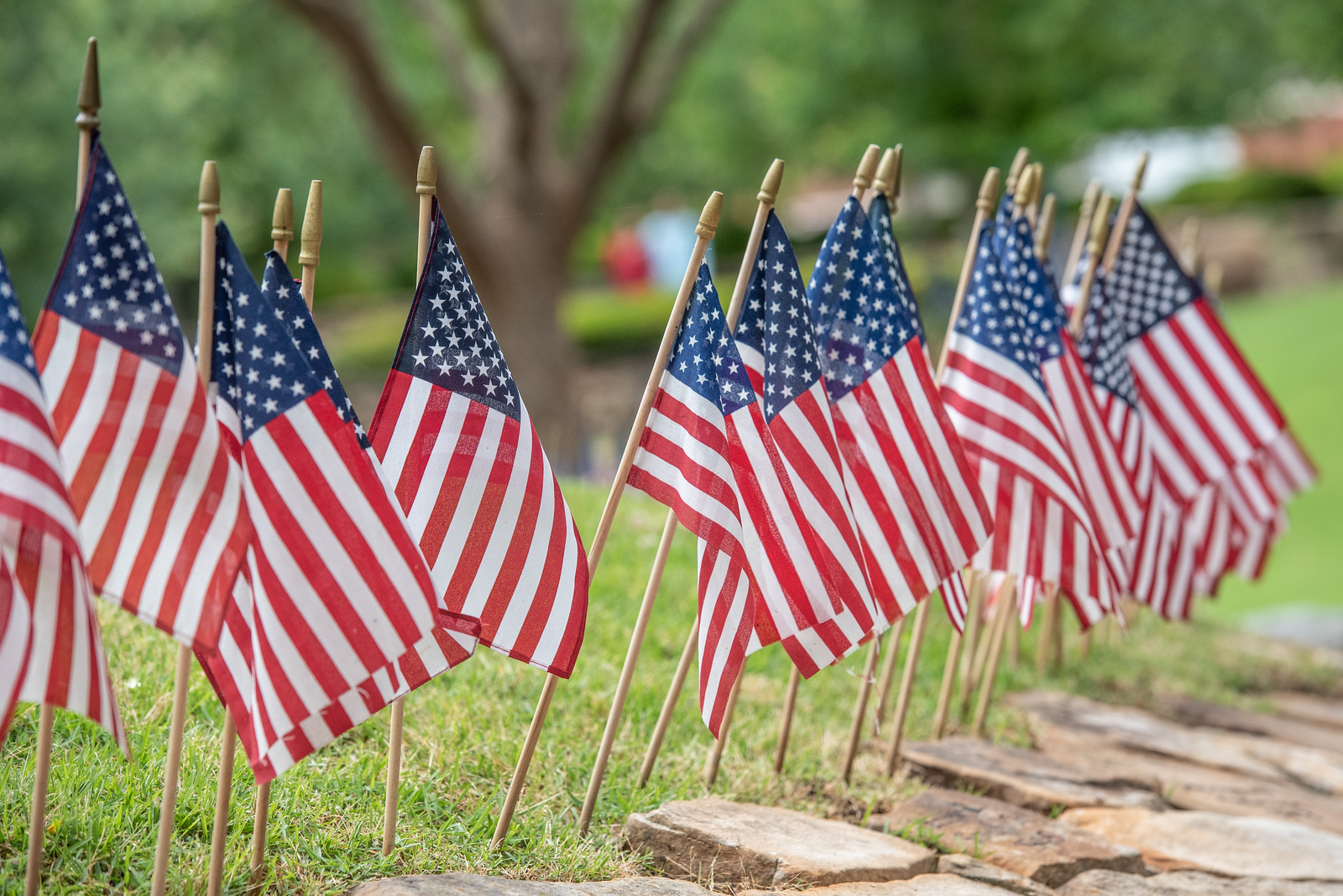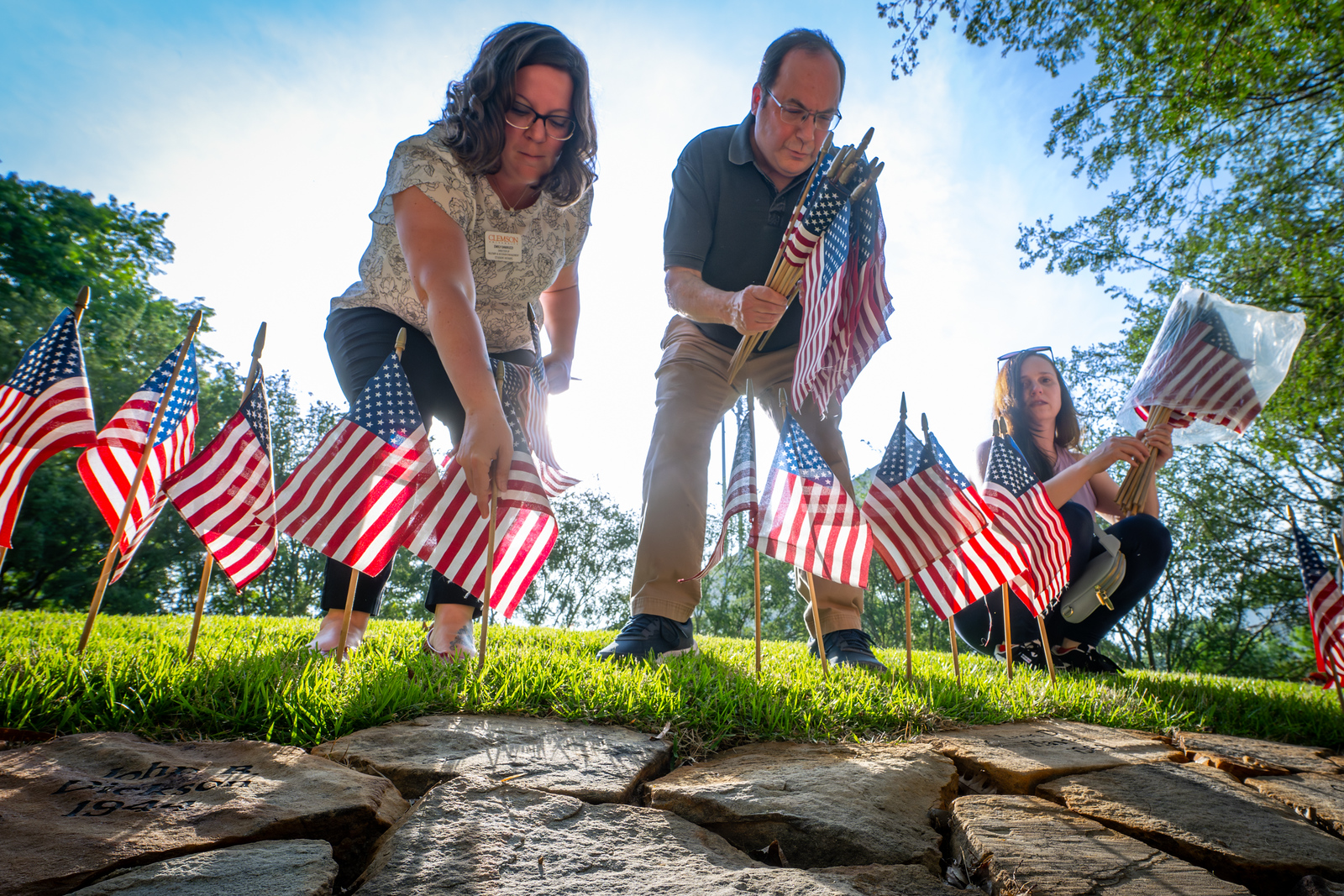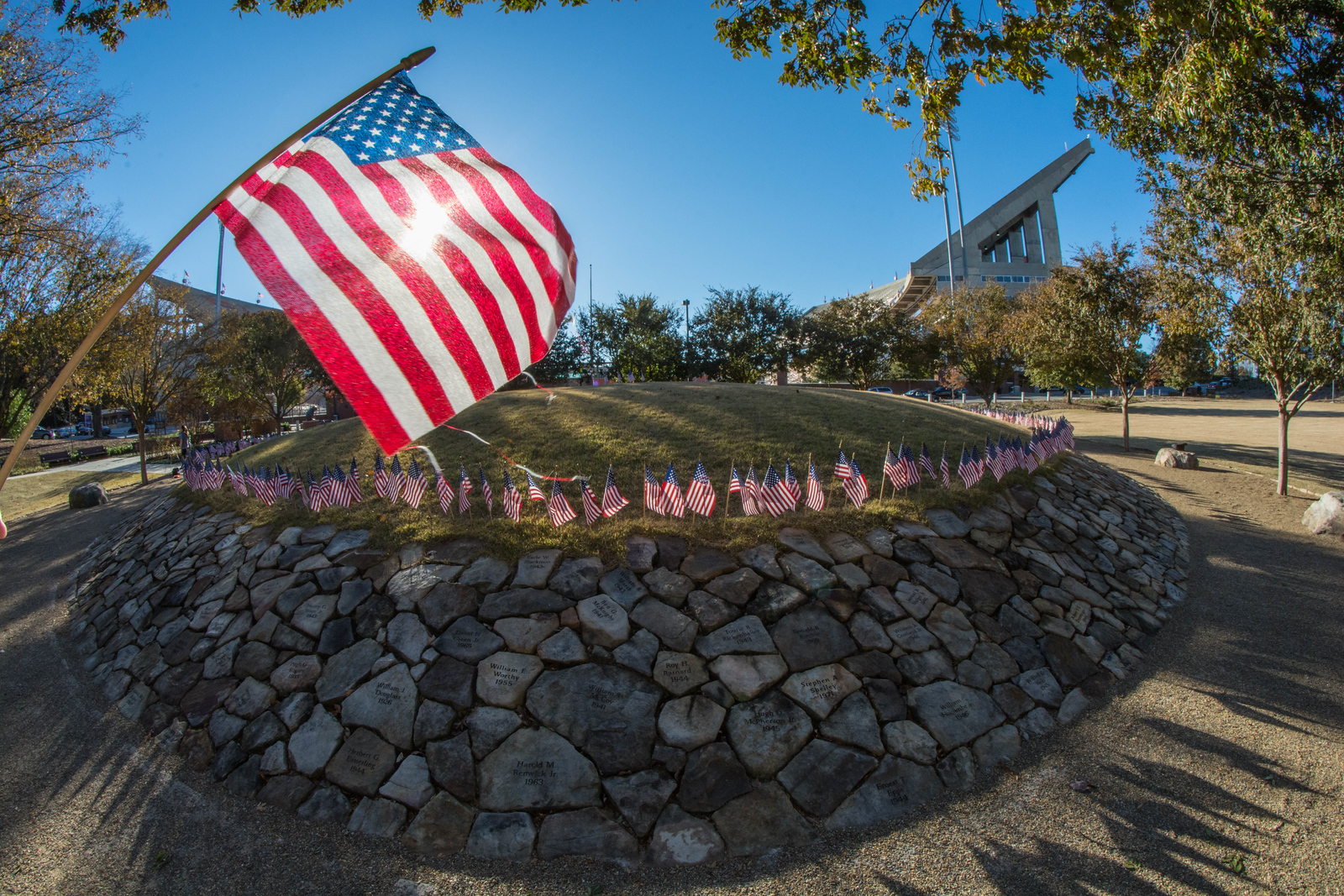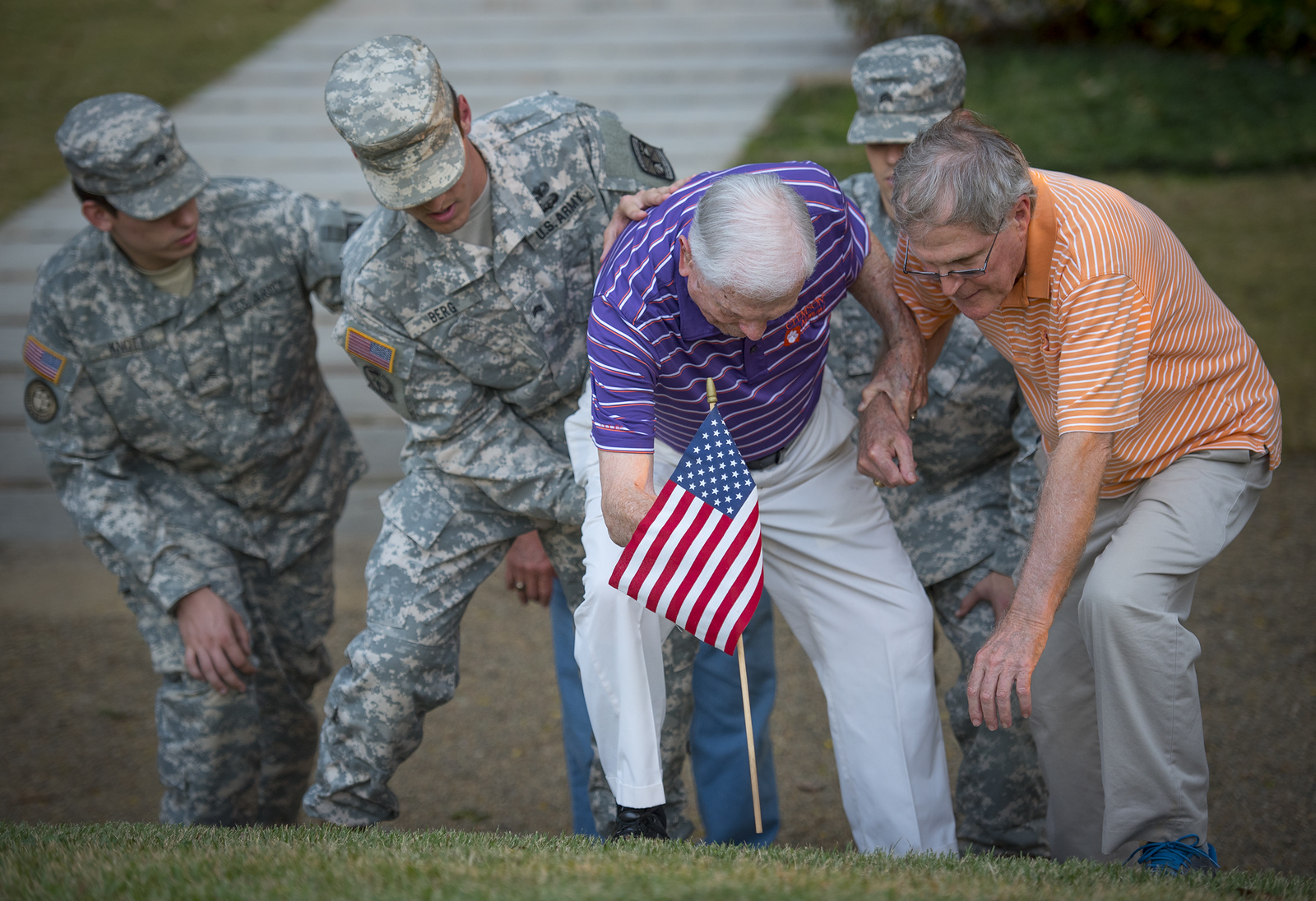History
The Scroll of Honor is among the most significant and sacred military memorials on Clemson University’s campus. The concept of the Scroll of Honor began in 2001, when Clemson Corps was planning the fall Military Appreciation Day. One of our members brought up the idea of identifying and honoring Clemson Alumni who paid the ultimate sacrifice in service to our nation. We saw this as an unequivocally critical aspect of perpetuating Clemson’s rich military heritage.
Clemson Corps began collecting names of these alumni who had given the ultimate sacrifice while performing their military duties and compiled them into what would become the original Scroll of Honor. The original Scroll of Honor was unveiled on Military Appreciation Day in 2002. It was in a portable frame and moved from place to place on campus. We later realized that a temporary, portable scroll was not befitting the sacrifice these great alumni had made. Thus, in 2005 we began considering a permanent memorial on campus that would appropriately honor our fallen alumni.
Our research led us to a document from 1942 that certified that the new football stadium would be named Memorial Stadium in honor of Clemson’s alumni who “have made the supreme sacrifice in the service of their country.” This inspired us to consider the area of the stadium as a site for the Scroll of Honor memorial. In 2006, we obtained the wholehearted approval of the Athletic Department to use the site upon which the Scroll of Honor Memorial now stands. It is on an axis that extends straight from the West Zone, through Howard’s Rock to Tillman Hall. In March 2007 we proposed the Scroll of Honor Memorial to the University Administrative Council and received their 100% approval to proceed.
With the gifts from thousands of alumni and friends of Clemson, this memorial became a reality. The groundbreaking ceremony was held in August 2008, to an audience of hundreds of Clemson cadets, alumni, and supporters.
Construction began in April 2009, and the Memorial was officially dedicated on April 22, 2010.
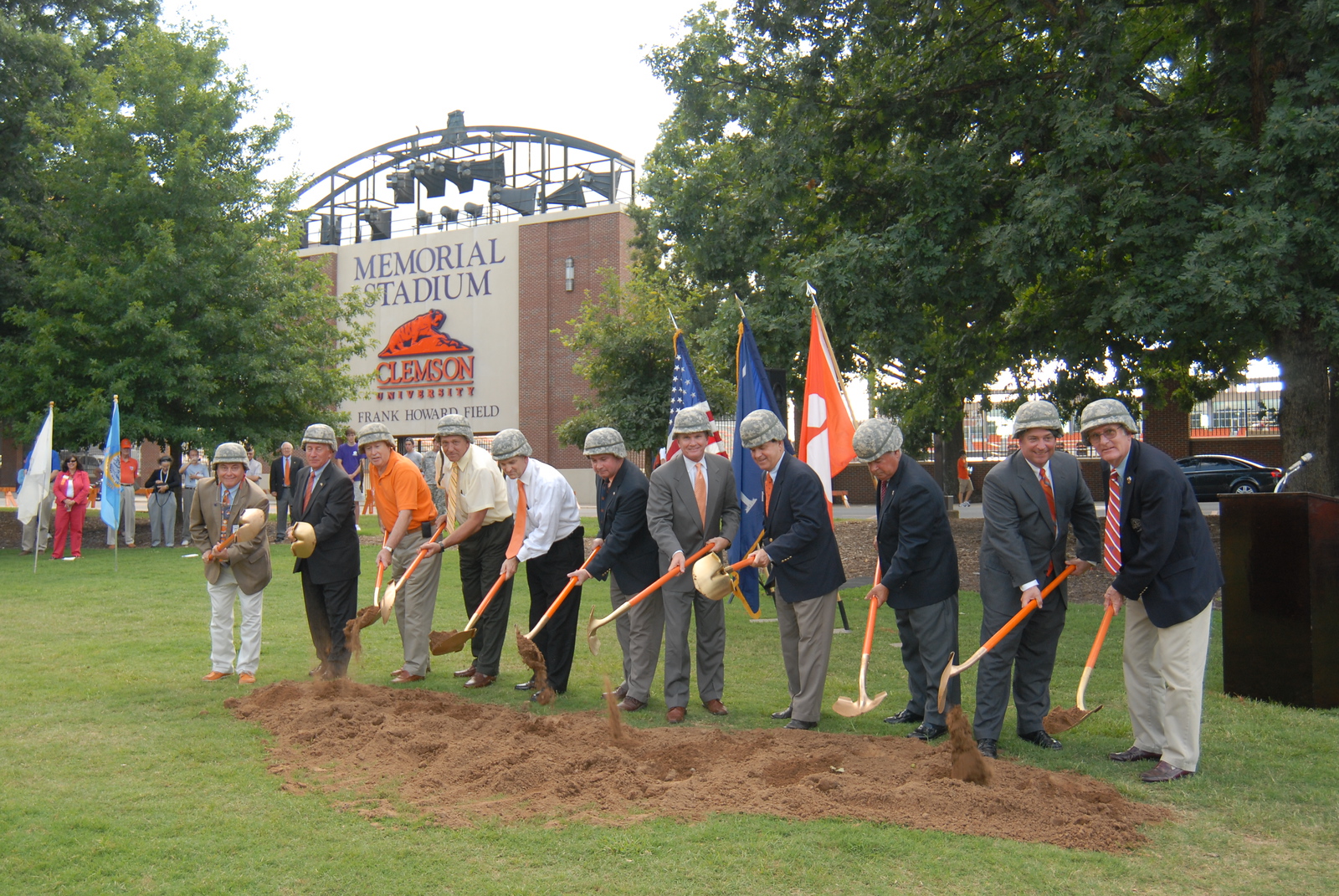

Freedom Isn't Free
On April 22, 2010, a Thursday, we officially dedicated the Scroll of Honor Memorial to Clemson alumni who perished in military service. At the time, we had identified 470 honorees to be honored on the Scroll of Honor. There were 27 names from WWI; 1 honoree from the Nicaraguan campaign; 378 honorees from WWII; 17 more from Korea; 1, that of a pilot, from the Cuban missile crisis; 25 from the Vietnam War; and 19 from the Cold War era and the wars on terror. Two additional names were added in the ceremony as well. In attendance of the ceremony were thousands of Clemson alumni, military veterans, cadets, and supporters of our community. Many members of the audience were family members, classmates, and hometown friends of the honorees.
The remains of some of our fallen alumni were never recovered. Some were buried at sea. Some will never come home; they are still missing in action across Europe, Asia, and the Pacific. To the families of these fallen alumni, the Scroll of Honor Memorial serves as the final resting place of their loved ones.
Inscribed on the base of the flagpole next to the Scroll of Honor are the names of Clemson alumni and supporters who donated to make the Scroll of Honor a reality, along with the inscription “Freedom Isn’t Free.” This inscription aptly honors the tremendous sacrifices these honorees made in defense of our nation and our freedoms.
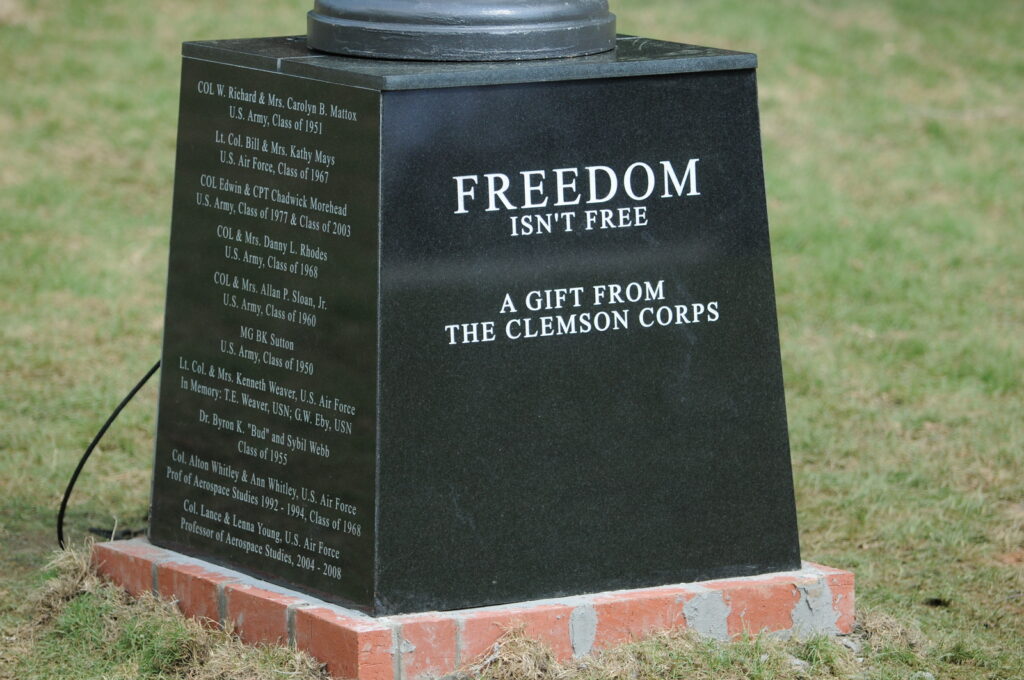

To date, there are 498 honorees on the Scroll of Honor. Clemson Corps continues research to find other fallen alumni who are eligible to be honorees. The Scroll of Honor has become one of our sites of sacred soil on Clemson University’s campus. It is a memorial that pays immense reverence to the selfless sacrifices our fallen alumni have made and is a constant, permanent reminder that the freedoms we enjoy every day are not free.

Symbology of the Scroll of Honor
When designing the Scroll of Honor, special attention was paid to the design of the memorial and the symbolism behind it. This was done to ensure that the memorial pays reverence to our fallen alumni and embodies a clear and simple expression of their characters and attributes.
The overall design is simple, yet dignified – like an outdoor chapel.
The Tigers represent a perpetual honor guard to ensure the sanctity of the Memorial. They appear to be engaged in a conversation about their responsibility.
The mound is circular in design to represent that duty, honor, and country are values that transcend time. The legacy of these heroes will never end, just as Roy Pearce wrote in 1944: “we’ll never let them down, never!”
This circular form symbolizes unity within this select group of people and more broadly represents the devotion that ultimately all within the Clemson family should share.
The basic and unrefined stone elements celebrate the uniqueness of the individuals while the assembly of the pieces around a mound – or barrow – celebrates their common bond.
The names are engraved in the stones in random fashion, just as the men fell on the battlefield. There is no pattern to death in war.
Only their names and class year are engraved on the stones. These were Clemson men and they were bound to their classmates. This they all had in common – not date of death, military service or rank.
The stones are mounted in the barrow at an angle so that visitors must bow their heads to read the names on the stones – as if in reverence to the memory of the heroes.
The trees are all slanted toward the barrow as if bowing to pay homage to the sacrifices of the honorees.
The area above the barrow is clear so that visitors can look up toward heaven as if to pay respect to the honorees.
The inscription on the base of the National Colors Monument – “Freedom is not Free” – tells the story of the sacrifice made by all these great men.

